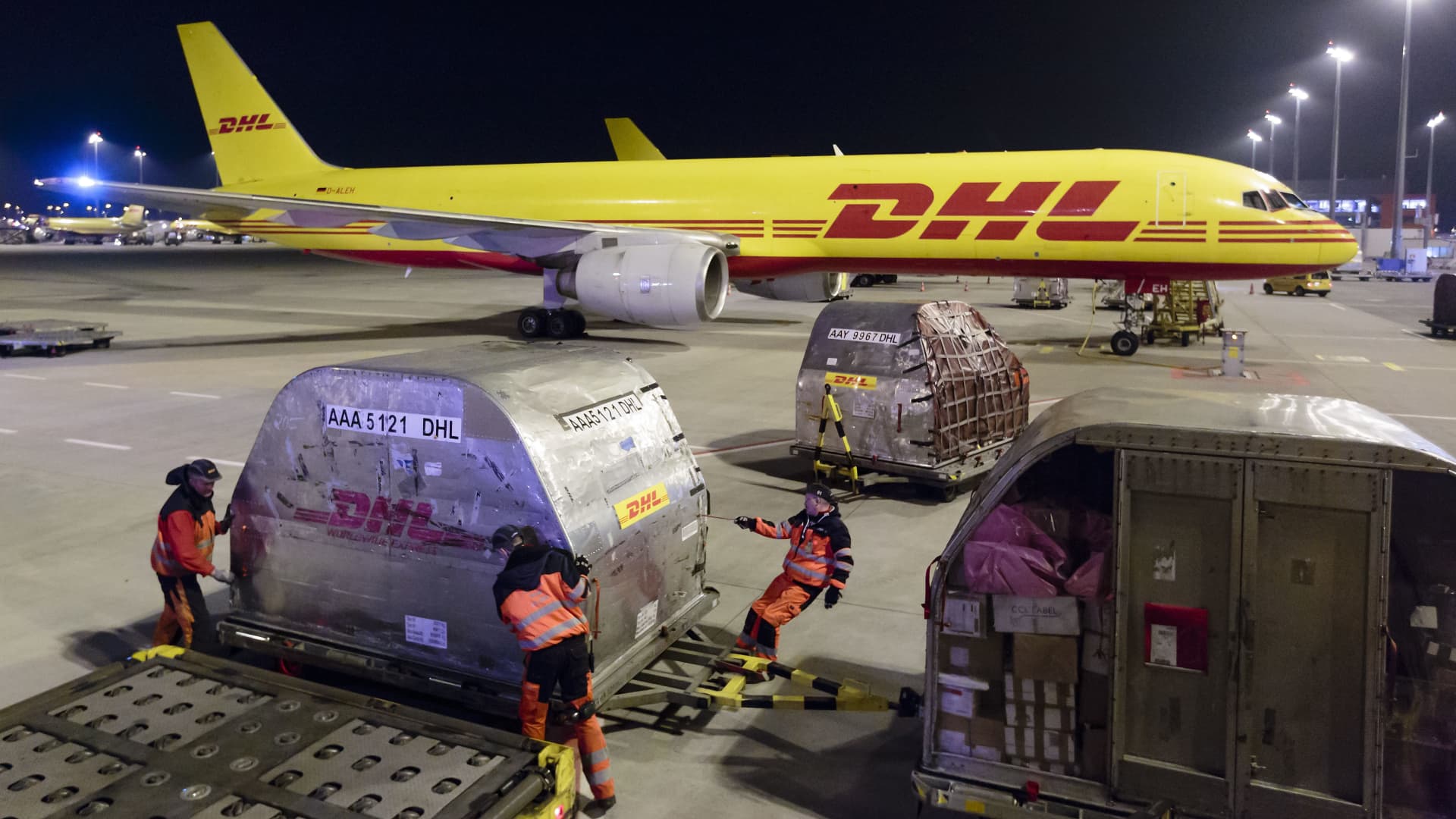DHL Cargo planes are unloaded at Halle-Leipzig Airport on February 28, 2014 in Leipzig, Germany. The soon to-be-expanded hub handles 2,000 tons of cargo, or 100,000 parcels and documents every business day. Up to 60 cargo planes land every weeknight.
Marco Prosch | Getty Images
The Houthi attacks in the Red Sea are not only driving up sea freight — air freights are going to get higher too, as global trade flows get increasingly disrupted.
In the past weeks, ocean freight rates have risen as much as $10,000 per 40-foot container, as container ships seeking to avoid the attacks embarked on long detours around the Cape of Good Hope in South Africa, diverting more than $200 billion of cargo away from the critical trade artery.
The delays to maritime trade may prompt some retailers to switch to air freight, as companies that normally ship their goods by sea want to ensure faster delivery, analysts said.
This means that air cargo is about to play an expanded role in the supply chain ecosystem. Air freight can slash delivery times to just a few days compared to weeks taken by ocean carriers.
“Some shippers are already in survival mode with one goal on their mind: ‘Make sure my freight moves by whatever means possible,'” Matthew Burgess, vice president of global ocean services at C.H. Robinson said.
In anticipation of an influx of ocean to air conversions, the transportation logistics firm is already blocking additional air capacity on core trade lanes to keep freight moving, Burgess said.
German logistics giant DHL told CNBC via email that the company has received several inquiries but not as many conversions yet.
“We expect that to change should the situation in the Red Sea continue,” said Andreas Von Pohl, air freight head for DHL Global Forwarding Americas.
If that happens, it will inevitably push rates even higher.
“We will see a surge in the air freight rate,” said HSBC’s Global Head of Shipping and Ports Research, Parash Jain. He said industry watchers are expecting to see the hikes in the next two to three weeks, especially as the Chinese New Year holiday in February approaches.
Traditionally, there’s an increase in exports out of Asia during the annual holiday period as companies try to transport more goods before businesses go offline for two weeks.
“The predictability of air cargo means the industry stands to benefit from escalating international disruption,” ocean and air freight analytics platform Xeneta wrote in a recent report.
The analytics firm noted that overarching air cargo spot rate recorded a 18% year-on-year decline in December. Global average air cargo spot rate peaked at about $2.6 per kg in December, according to Xeneta data.
